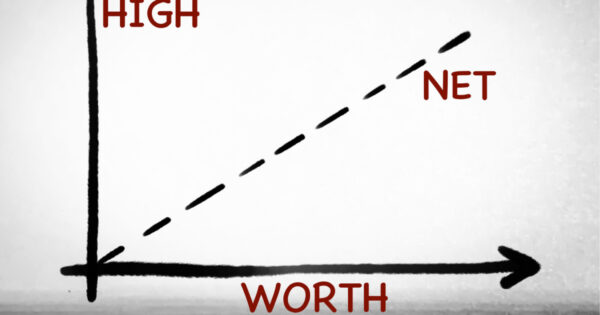RBA slows easing cycle with a rate hold, cites ‘cautious’ outlook

The Reserve Bank of Australia (RBA) has signalled its return to a more ‘steady’ and ‘measured’ rate easing cycle by holding the official cash rate at 4.10 per cent, following the 25 basis-point reduction announced as its first policy decision of 2025.
The RBA Board cited growing uncertainty concerning the global outlook and a desire to review the upcoming quarterly inflation numbers, as US President Donald Trump also gears up to announce a host of tariffs to be imposed on several nations around the world, including Australia.
In a statement made by the Board today, it also confirmed that local “monetary policy is well placed to respond to international developments if they were to have material implications for Australian activity and inflation”.
“Inflation has fallen substantially since the peak in 2022, as higher interest rates have been working to bring aggregate demand and supply closer towards balance,” the statement said.
“Recent information suggests that underlying inflation continues to ease in line with the most recent forecasts published in the February Statement on Monetary Policy. Nevertheless, the Board needs to be confident that this progress will continue so that inflation returns to the midpoint of the target band on a sustainable basis.
“It is therefore cautious about the outlook. Uncertainty about the outlook abroad also remains significant. On the macroeconomic policy front, recent announcements from the United States on tariffs are having an impact on confidence globally and this would likely be amplified if the scope of tariffs widens, or other countries take retaliatory measures.
“Geopolitical uncertainties are also pronounced. These developments are expected to have an adverse effect on global activity, particularly if households and firms delay expenditures pending greater clarity on the outlook. Inflation, however, could move in either direction.
“Many central banks have eased monetary policy since the start of the year, but they have become increasingly attentive to the evolving risks from recent global policy developments.”
The Board also indicated that while its decision had been based on evidence that “real household incomes have picked up” and that there has been “an easing in some measures of financial stress”, other data sets and indicators suggested that “labour market conditions remain tight”.
“Despite a decline in employment in February, measures of labour underutilisation are at relatively low rates and business surveys and liaison suggest that availability of labour is still a constraint for a range of employers. Wage pressures have eased a little more than expected but productivity growth has not picked up and growth in unit labour costs remains high,” the Board’s statement said.
“There are notable uncertainties about the outlook for domestic economic activity and inflation. The central projection is for growth in household consumption to continue to increase as income growth rises. But there is a risk that any pick-up in consumption is slower than expected, resulting in continued subdued output growth and a sharper deterioration in the labour market than currently expected. Alternatively, labour market outcomes may prove stronger than expected, given the signal from a range of leading indicators.
“More broadly, there are uncertainties regarding the lags in the effect of monetary policy and how firms’ pricing decisions and wages will respond to the demand environment and weak productivity outcomes while conditions in the labour market remain tight.”
The RBA re-affirmed its commitment to “sustainably returning inflation to target within a reasonable timeframe”, but also advised that it will continue to refer to data and the evolving nature of key trends to make further policy decisions.
“This is consistent with the RBA’s mandate for price stability and full employment. To date, longer term inflation expectations have been consistent with the inflation target and it is important that this remain the case.
“The Board’s assessment is that monetary policy remains restrictive. The continued decline in underlying inflation is welcome, but there are nevertheless risks on both sides and the Board is cautious about the outlook.”
According to economists and market commentators, the decision did not necessarily come as a surprise.
“Today’s Reserve Bank decision to keep interest rates on hold is not a surprise as further cuts will hinge on there being more evidence that consumer demand is weakening and inflation is continuing to decline,” Dr Grant Feng, Vanguard Senior Economist, said.
“Vanguard is not expecting any further rate reductions in Australia until the second half of 2025. The main factors keeping rates at the current level continue to be Australia’s tight jobs market and the ongoing acceleration in government spending. Expansionary public demand has offset the impact of higher rates on private demand and this trend is likely to continue, as indicated in this year’s federal government budget.
“Meanwhile, household net wealth has increased to record high levels, offsetting the impact of higher interest rates. Combined with a resilient labour market, this suggests the economy is still operating close to full capacity. In addition, ongoing global developments pose considerable risks to Australia’s economic and inflation outlook and warrant a cautious policy stance on interest rates.”











If these were Fee renewals(FDS/FCF) then ASIC would be coming down hard. Fee refunds, breach reporting, etc etc. Obviously advisers…
The opinions of Comrade Super should be immediately put in the bin. Aren't these the same funds that get fined…
On that basis then, advisers that have done nothing wrong, should not be expected to pay for the wrongs of…
On the very same theory, why should I pay for the misdeeds of others ? It wasn't my financial advice…
ISFs on the other hand a BEGGING Government to charge these same 12 Million low- and middle-income Australians HIDDEN COMMISSIONS…